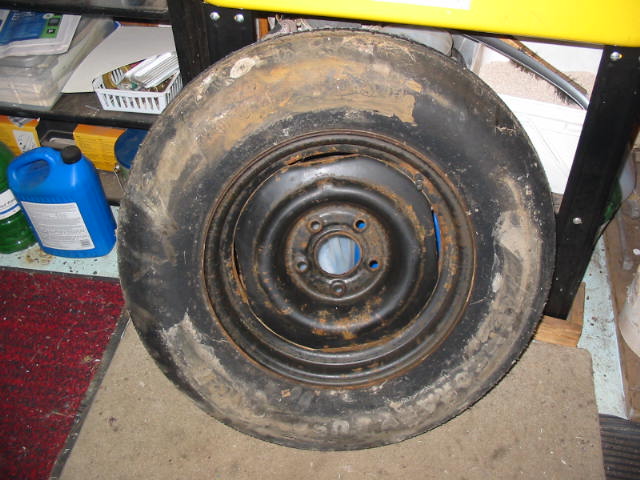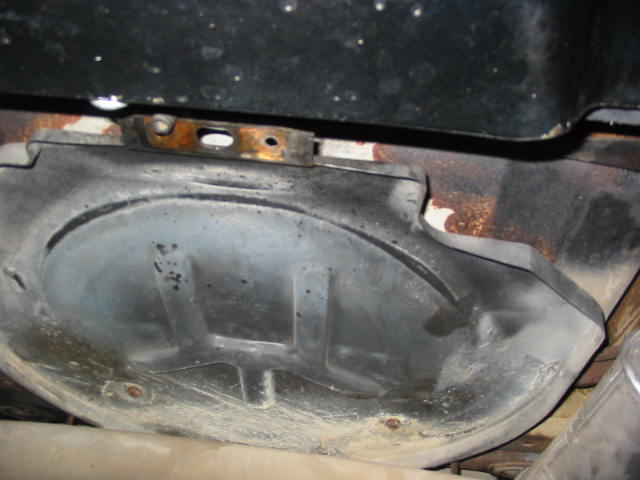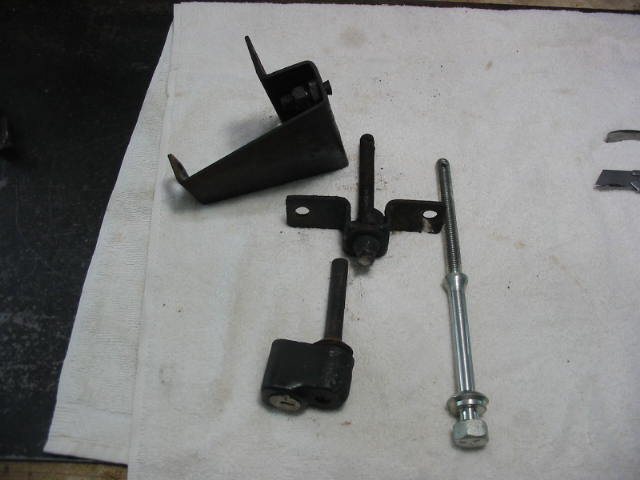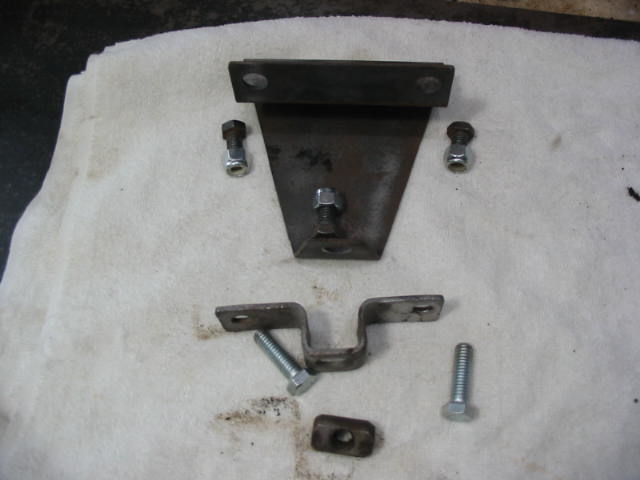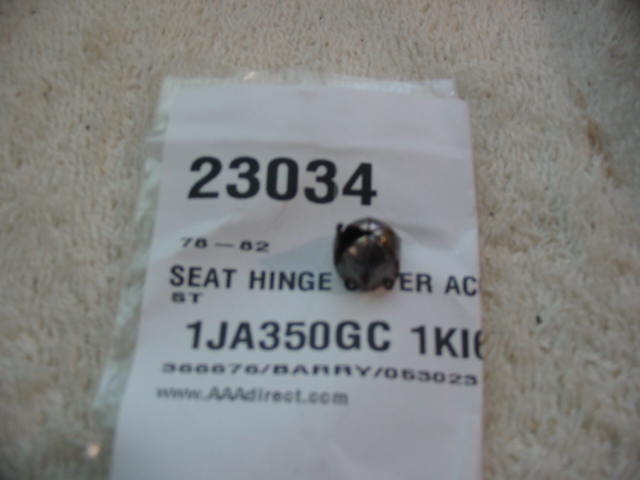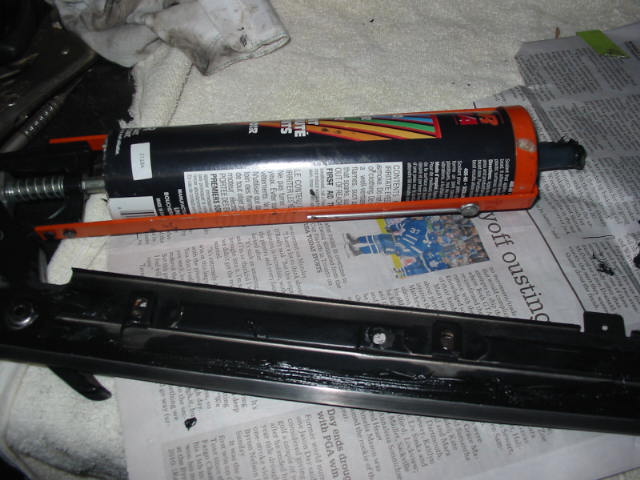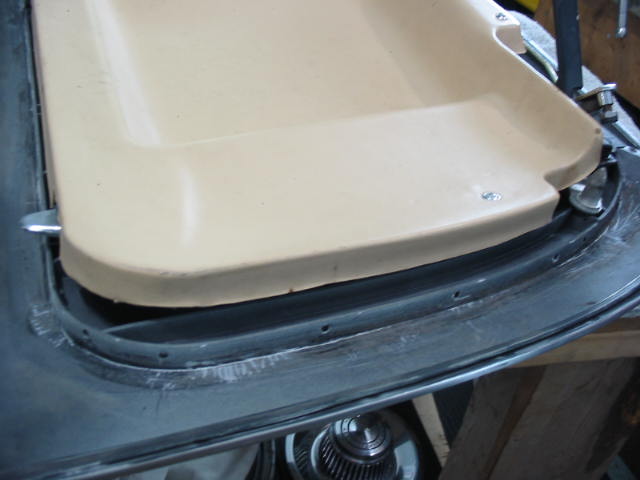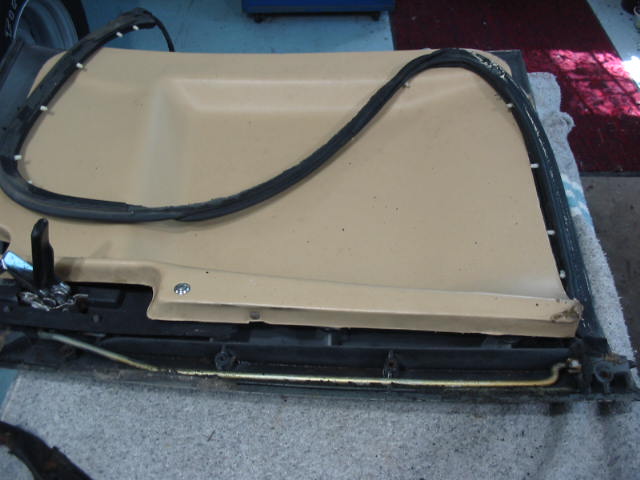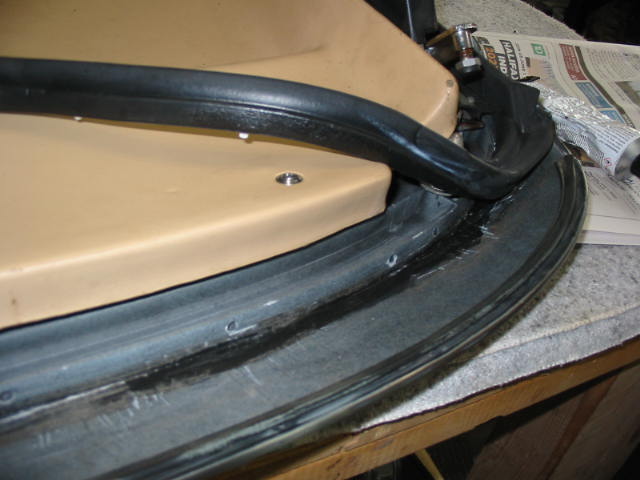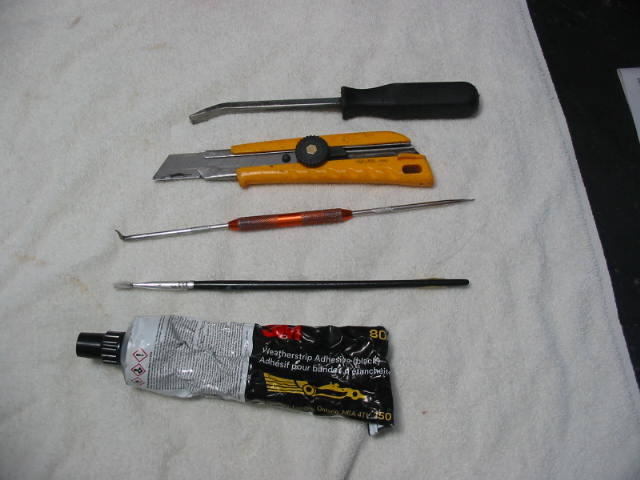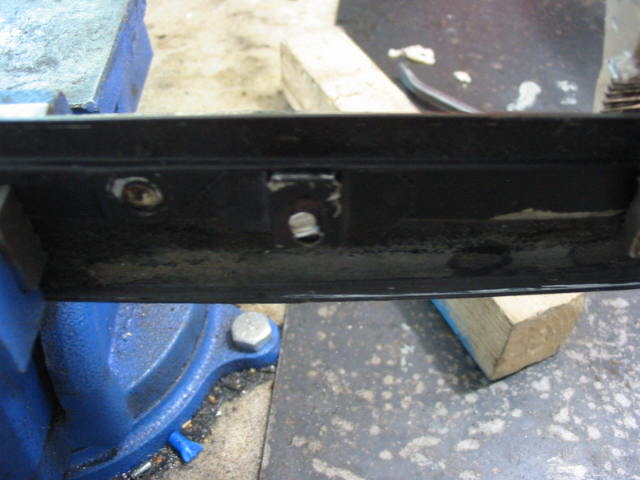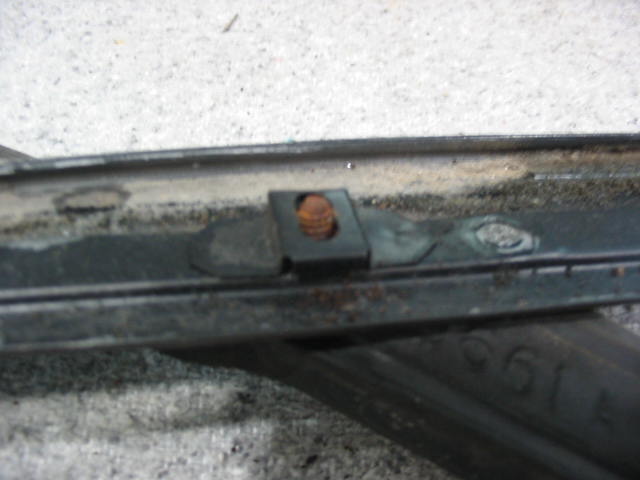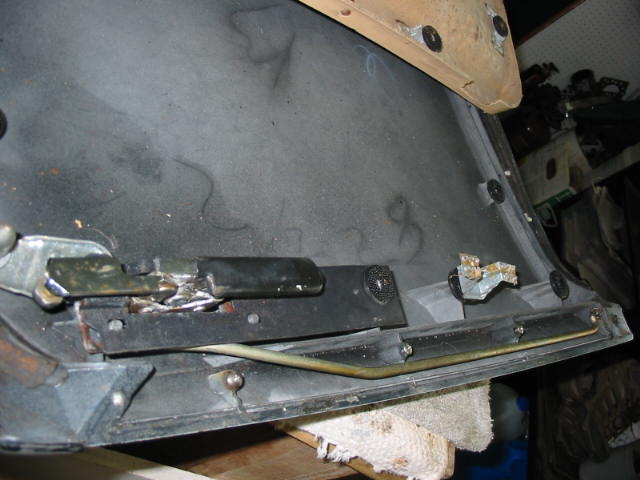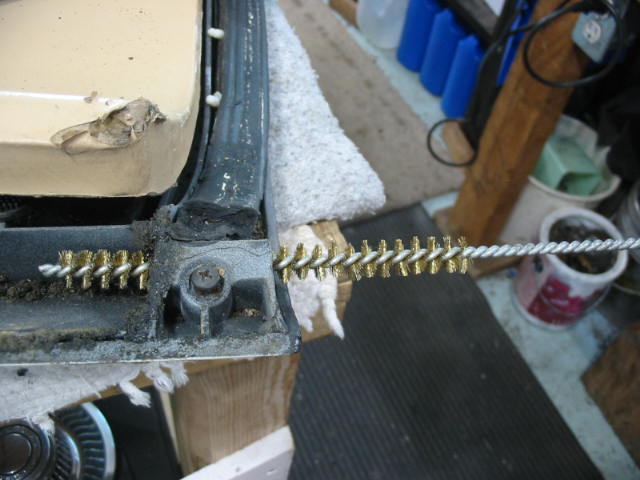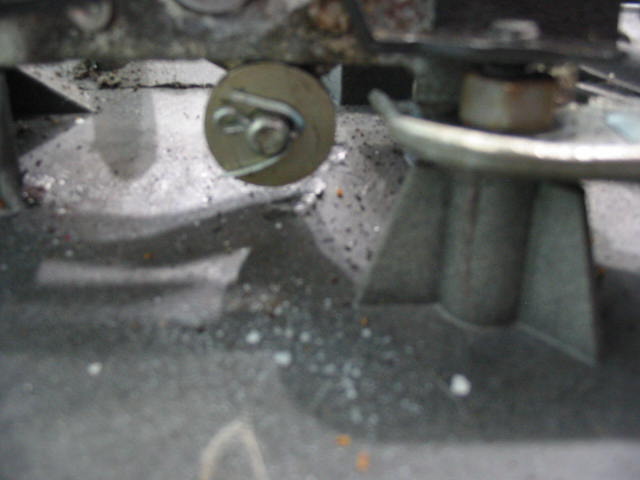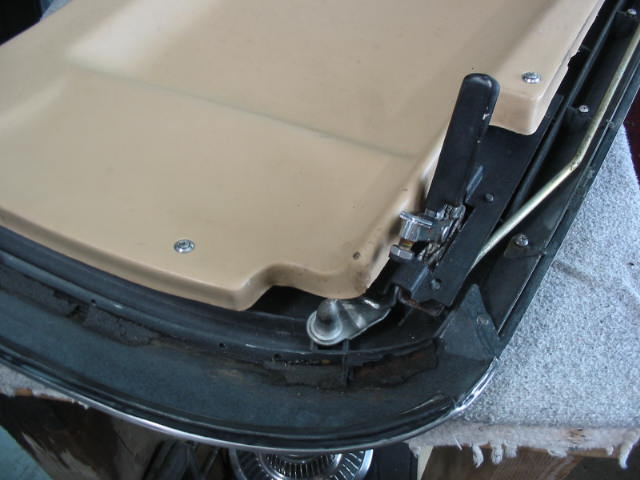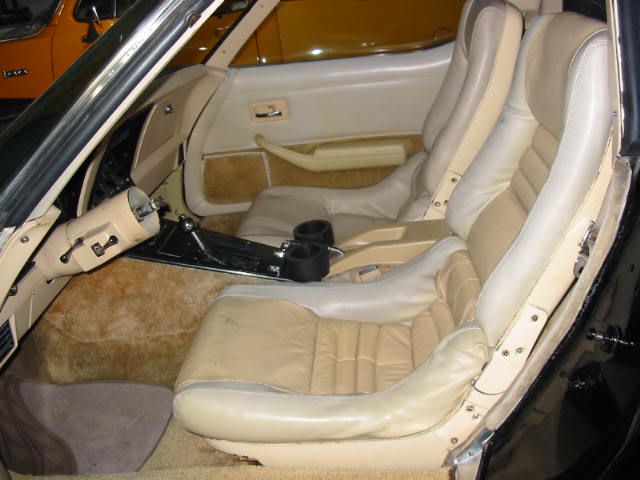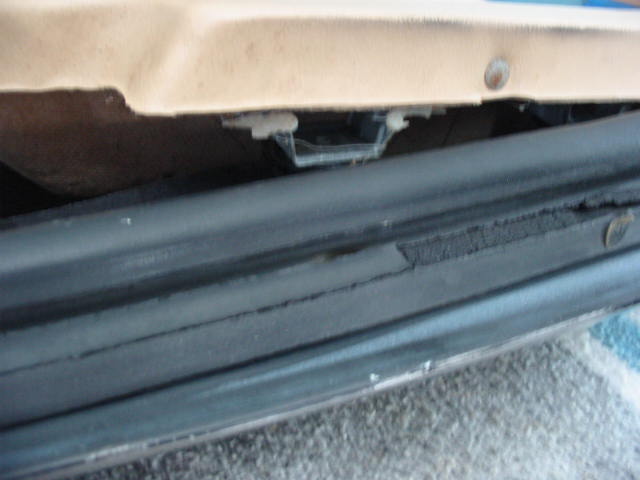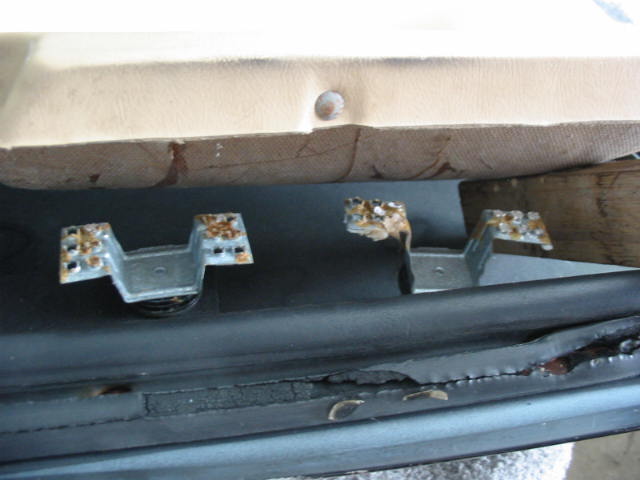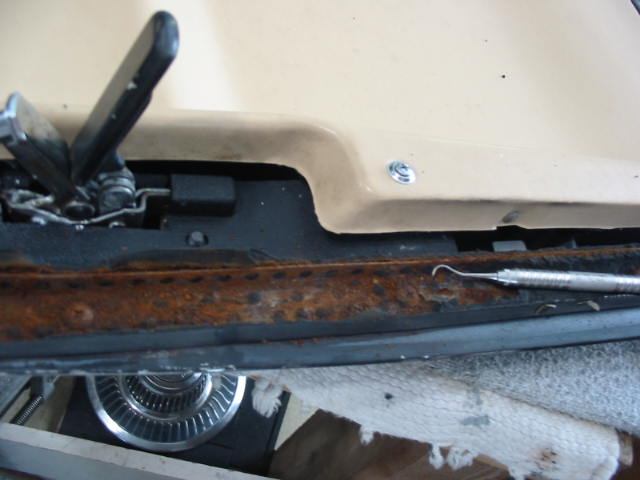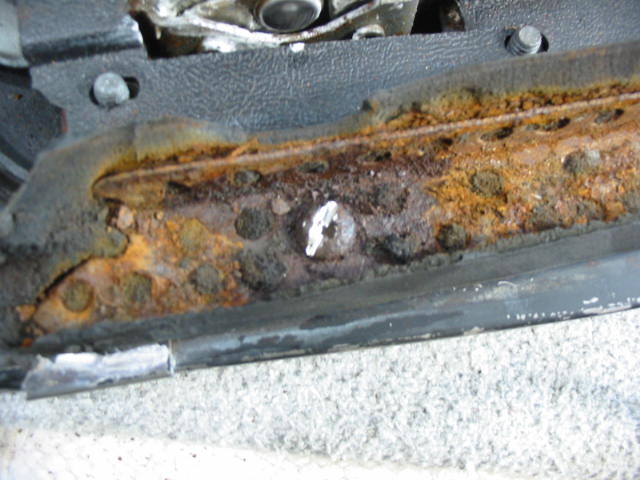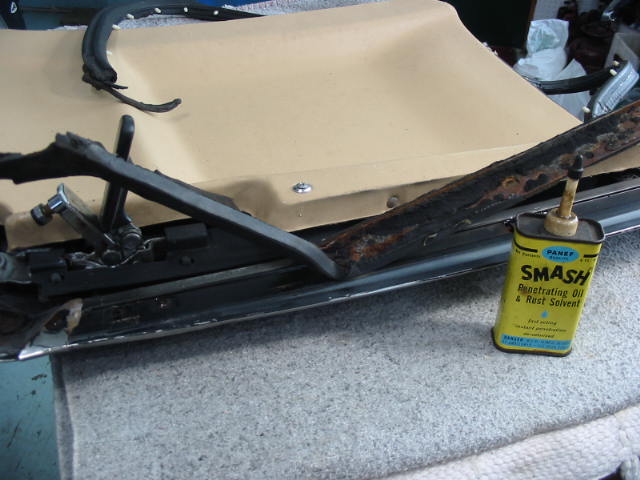
The hub caps are not too nice with lots of pits and the trim rings have some curb rash. Still they are presentable enough and worth a shine up before putting them back on the car – after I get the alignment done.

Starting to work on the AC. Rewired the connections and added an adapter on the low pressure side for the newer refrigerants.

The AC throttle ‘kicker’ is toast so I’ll need to order a new one of those.

Time to prep for the windshield replacement. All the attaching screws of the surrounding windshield trim need to be loosened so that the job doesn’t get held up because the tech has broken off a screw or can’t get it out.

Some screws had to have a slot cut into them with a dremel tool with a small cutoff wheel.

That worked in one case, but the other thee stuck screws had to be coaxed to turn with a fine chisel and hammer and then removed with a small vice grip.

Got all eight out and then replaced the trim with new screws. I still need to check the large stainless T trim piece.

Time to go to the alignment shop. Hopefully the suspension is up to snuff!









